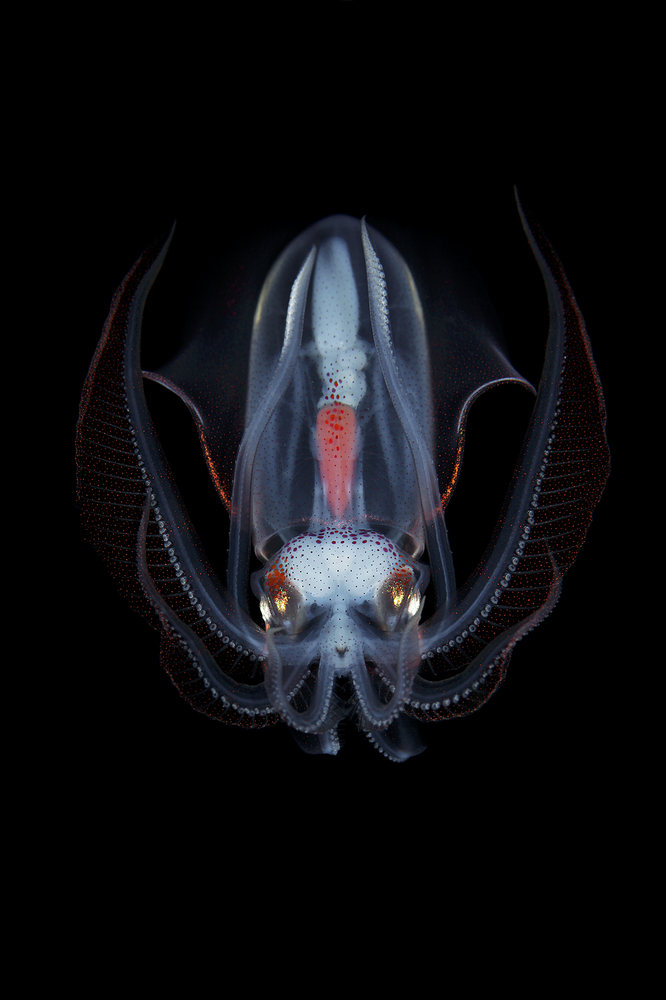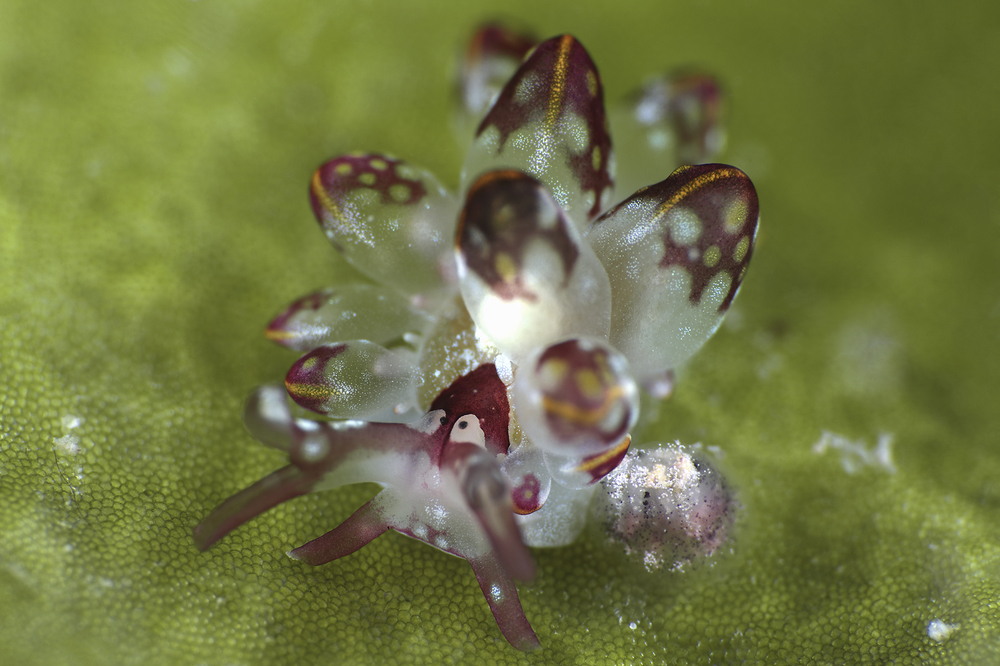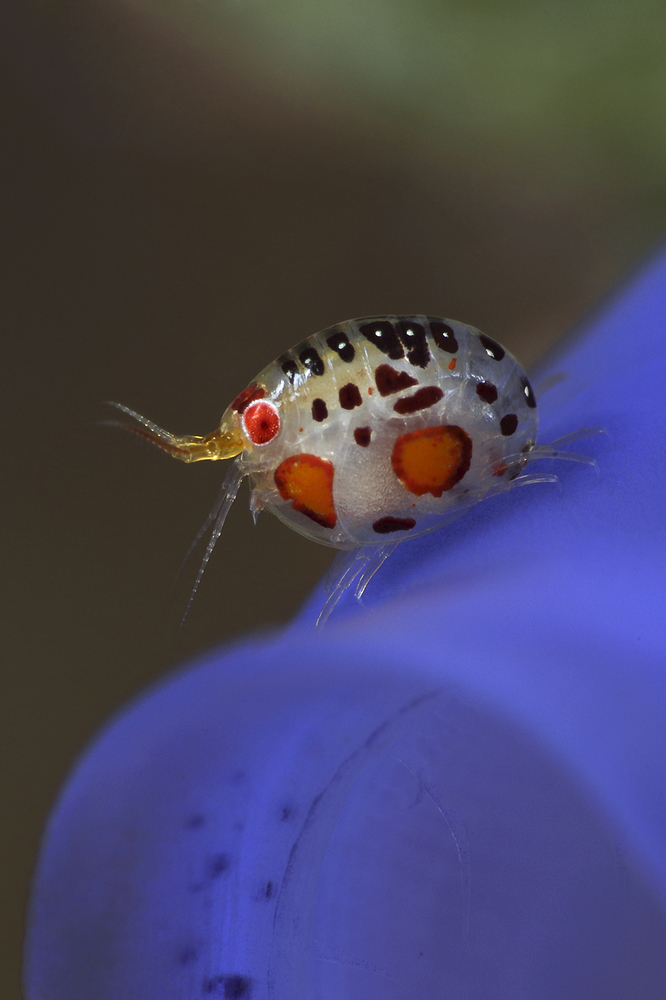If you think photographing sea creatures underwater is challenging, try capturing macro shots of tiny sea animals such as the Juvenile Diamond Squid or a Yellowtail Blenny. We speak with professional underwater and wildlife photographer William Tan to understand more about macro photography and learn how to capture these tiny, fragile yet amazing creatures.

EOS-1D X Mark II, EF100mm f/2.8 Macro USM lens, f/9.0, 100mm, 1/250sec, ISO100
Juvenile Diamond Squid (Thysanoteuthis rhombus). Photographed by William Tan.
Where do I start if I'm interested in photographing macro subjects underwater?
Buy the best camera you can afford, read up on shooting and photography tips on Canon websites, or dive forums on the internet.
What are the types of macro lenses you recommend?
There are many specialised macro lenses and wet lenses on the market. I am using both the Canon EF 100mm f/2.8 Macro USM Lens and Canon EF 100mm f/2.8L Macro IS USM Lens for my work. If the subjects become too tiny for life size 1:1 macro magnification, I add a Nauticam SMC (macro conversion lens optimised for in-water use) or a SMC-2 in front of the lens port for super macro shooting.

EOS-1D X Mark II, EF100mm f/2.8 Macro USM lens, f/16, 100mm, 1/250sec, ISO100
3-4mm Cyerce kikutarobabai will fill the frame when shot with an attached Nauticam SMC-2. Photographed by William Tan.
Are there any specific settings required for macro photography?
The aperture sweet spot for both of my f/2.8 macro lenses are between f/5.6 to f/11. I normally shoot at f/11 to get amazing sharpness with the most depth of field. Set the shutter speed to the fastest your strobes can sync (with the camera shutter), and opt for a better resolution by choosing a lower ISO. I adjust my strobe power manually to get the right exposures.

EOS-1D X Mark II, EF100mm f/2.8 Macro USM lens, f/5.6, 100mm, 1/250sec, ISO100
A curious Yellowtail Blenny (Ecsenius namiyei). Photographed by William Tan.
Where would be your favourite places to shoot these amazing creatures?
I visit many dive destinations known for their macro photography–Anilao, Lembeh, Mabul, and Tulamben being fine examples. I also visit the more exotic Ishigaki, Shiretoko and Takeno for specific macro subjects. Singapore’s Pulau Hantu also has some amazing macro residents. (SG Underwater Macro Photographers)

EOS-1D X Mark II, EF100mm f/2.8 Macro USM lens, f/18, 100mm, 1/250sec, ISO100
Less than 1mm Lumpsucker Fish (Lethotremus awaes) baby. Photographed by William Tan.
What is the biggest difference, in your opinion, between shooting macro subjects and others?
Macro subjects are usually smaller, and stay within a fixed area so you won’t have to chase after them. You might need certain knowledge and keen eyes to find them. They are also usually more fragile and easily harmed, so please resist from handling them when shooting.

EOS-1D X Mark II, EF100mm f/2.8 Macro USM lens, f/18, 100mm, 1/250sec, ISO100
2mm Ladybug (Cyproidea sp.) on Tunicate. Photographed by William Tan.
Be prepared for your underwater photography adventure with 4 Important Things to Remember When Photographing Underwater; or read up on William’s interview on How to Take Advantage of Sea Creatures Behaviours. If you are worried about framing underwater, get some tips from 5 Things to Note When Composing Your Shots Underwater.
Receive the latest update on photography news, tips and tricks.
Be part of the SNAPSHOT Community.
Sign Up Now!



































